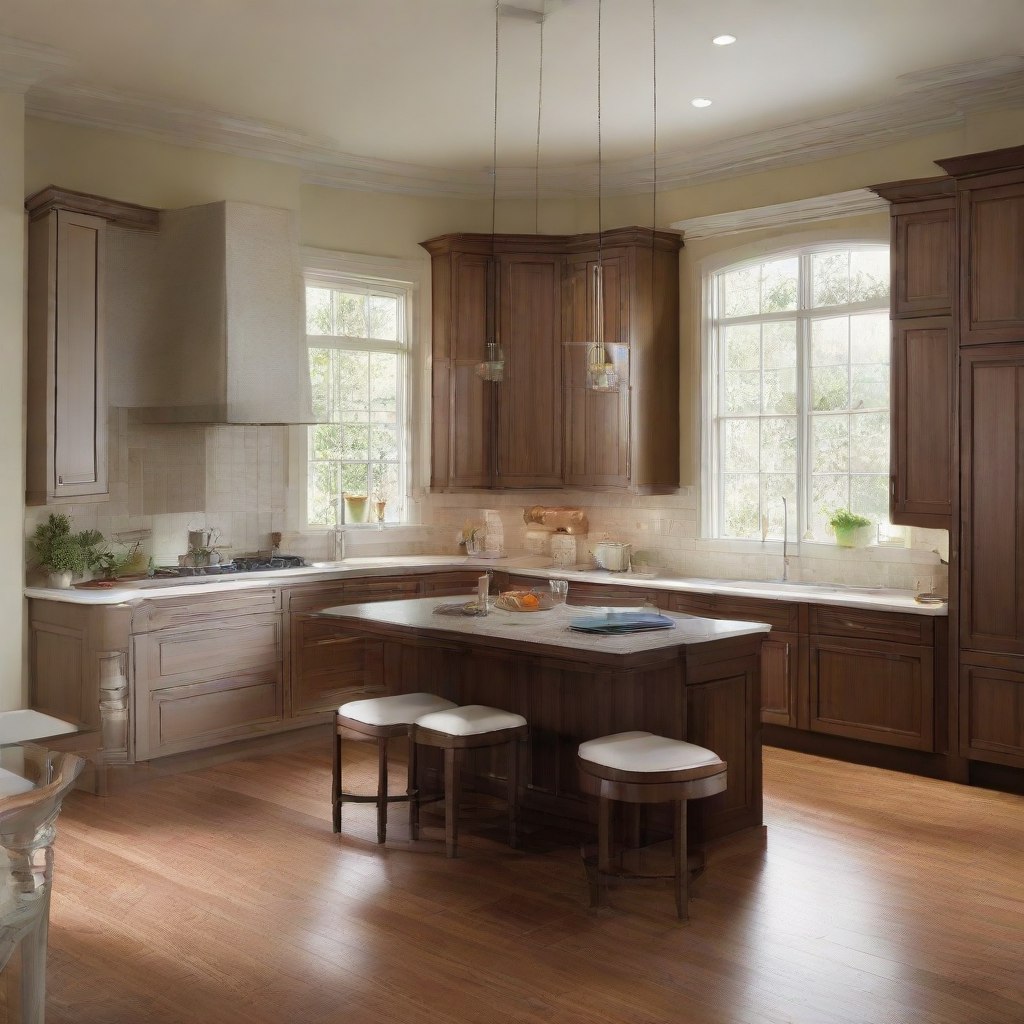Your kitchen is the heart of your home, where culinary creativity meets everyday functionality. Whether you’re remodeling an existing kitchen or designing one from scratch, getting the layout and design right is essential for creating a space that’s both efficient and inviting. In this comprehensive guide, we’ll explore the key considerations and steps involved in planning the perfect kitchen layout and design.
Understanding Kitchen Layouts
Before diving into the design process, it’s important to understand the different types of kitchen layouts and their pros and cons:
1. The L-Shaped Kitchen
The L-shaped kitchen layout is a popular choice for its efficiency and versatility. It consists of two adjacent walls of cabinets forming an L shape, with ample counter space for food prep and cooking. This layout works well for both small and large kitchens, providing plenty of storage and workspace.
| Pros | Cons |
|---|---|
| Efficient use of space | May not provide enough room for a kitchen island |
| Offers plenty of counter space | Can feel cramped if not properly planned |
| Provides good workflow for cooking | May lack natural light in some cases |
2. The U-Shaped Kitchen
The U-shaped kitchen layout features cabinets and appliances along three walls, forming a U shape. This layout maximizes storage and counter space, making it ideal for larger kitchens or homes with multiple cooks. It also provides excellent workflow, with everything within easy reach.
- Maximizes storage and counter space
- Efficient workflow for cooking
- Allows for multiple cooks
3. The Galley Kitchen
The galley kitchen, also known as a corridor or parallel kitchen, features cabinets and appliances along two parallel walls. This layout is space-efficient and works well for small or narrow kitchens, providing a streamlined workflow for cooking and meal preparation.
- Space-efficient
- Streamlined workflow
- Can feel cramped in larger kitchens
4. The Island Kitchen
The island kitchen layout incorporates a central island or peninsula, providing additional workspace, storage, and seating. This layout is ideal for open-concept spaces or large kitchens, offering a focal point for cooking, dining, and entertaining.
- Additional workspace and storage
- Creates a focal point in the kitchen
- Requires adequate space for circulation
Design Considerations
Once you’ve chosen a layout that suits your needs and space constraints, it’s time to focus on the design details that will bring your kitchen to life:
1. Cabinetry and Storage
Consider your storage needs and choose cabinets that maximize space and functionality. Opt for features like pull-out shelves, drawer organizers, and pantry storage to keep your kitchen organized and clutter-free.
2. Countertops and Surfaces
Choose countertops and surfaces that are both durable and visually appealing. Granite, quartz, and butcher block are popular choices for countertops, offering durability and style. Consider incorporating a mix of materials for added visual interest.
3. Appliances and Fixtures
Select appliances and fixtures that fit your cooking style and preferences. Invest in high-quality appliances with energy-efficient features and innovative technology. Choose fixtures that complement your kitchen’s aesthetic, whether you prefer sleek and modern or classic and traditional.
4. Lighting and Ambiance
Lighting plays a crucial role in kitchen design, both for functionality and ambiance. Incorporate a mix of task lighting, ambient lighting, and accent lighting to illuminate your workspace and create a warm, inviting atmosphere. Consider pendant lights over the island, under-cabinet lighting for task areas, and dimmer switches for versatility.
Putting It All Together
Now that you’ve considered all the elements of kitchen layout and design, it’s time to put your plan into action:
1. Measure Your Space
Start by measuring your kitchen space to determine the dimensions and layout. Take note of existing features like windows, doors, and structural elements that may impact your design.
2. Create a Floor Plan
Use your measurements to create a detailed floor plan, incorporating your chosen layout and design elements. Consider factors like


